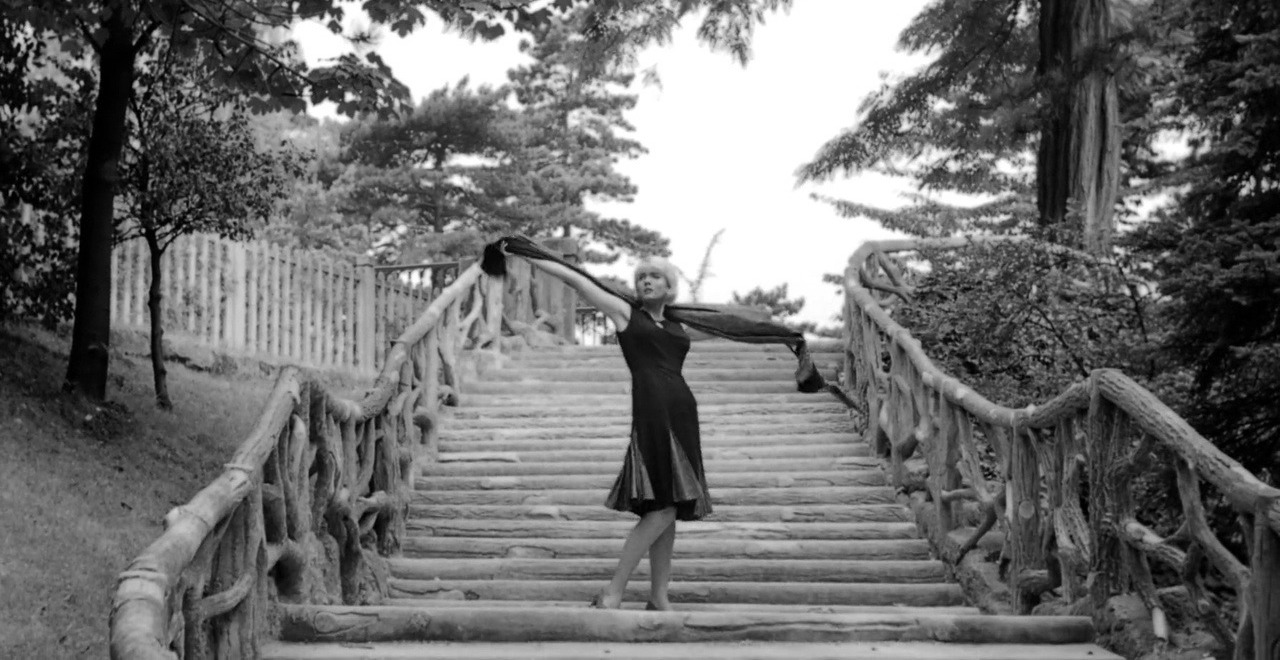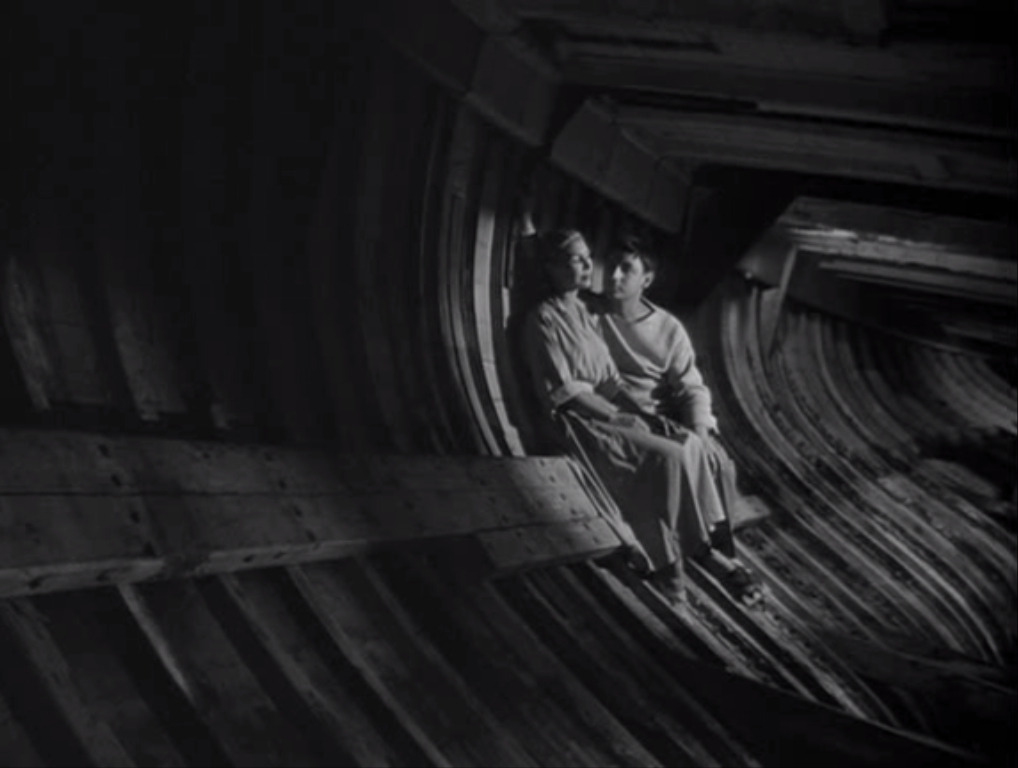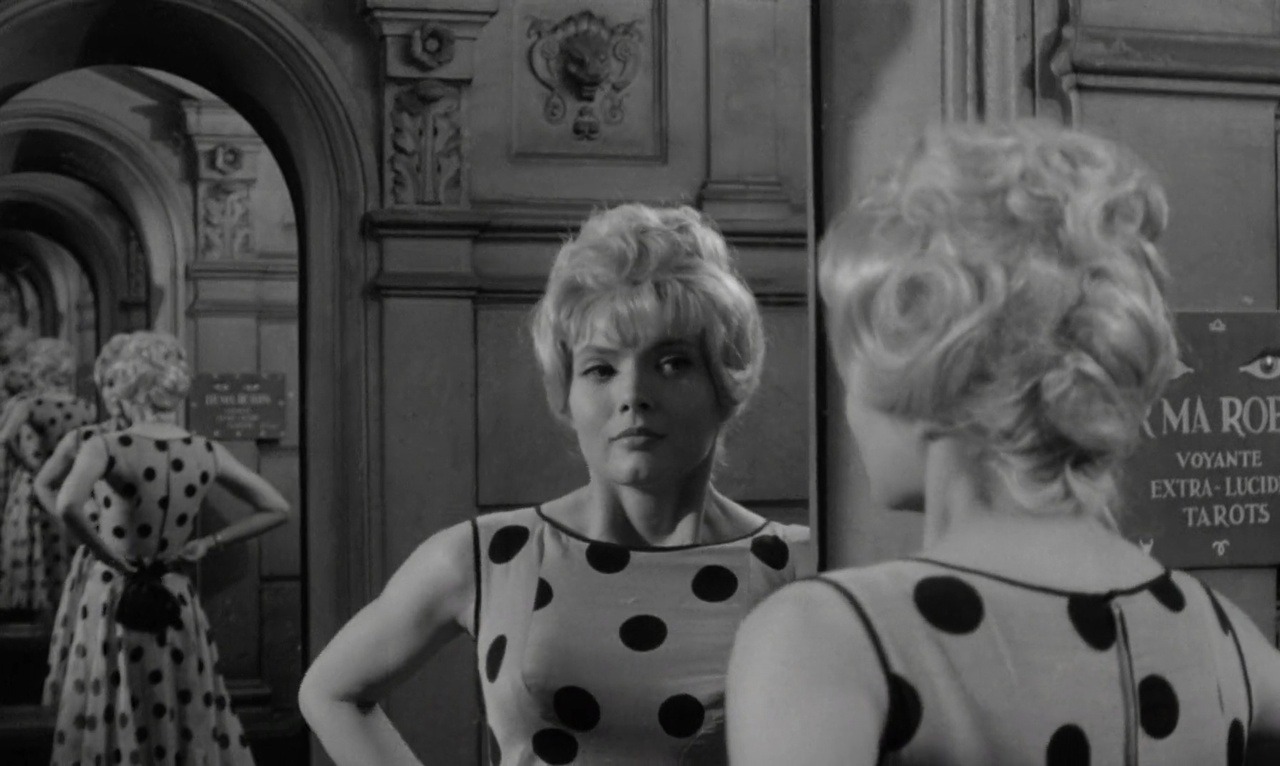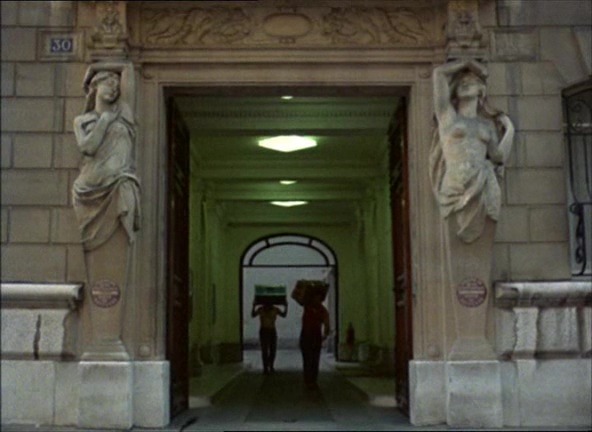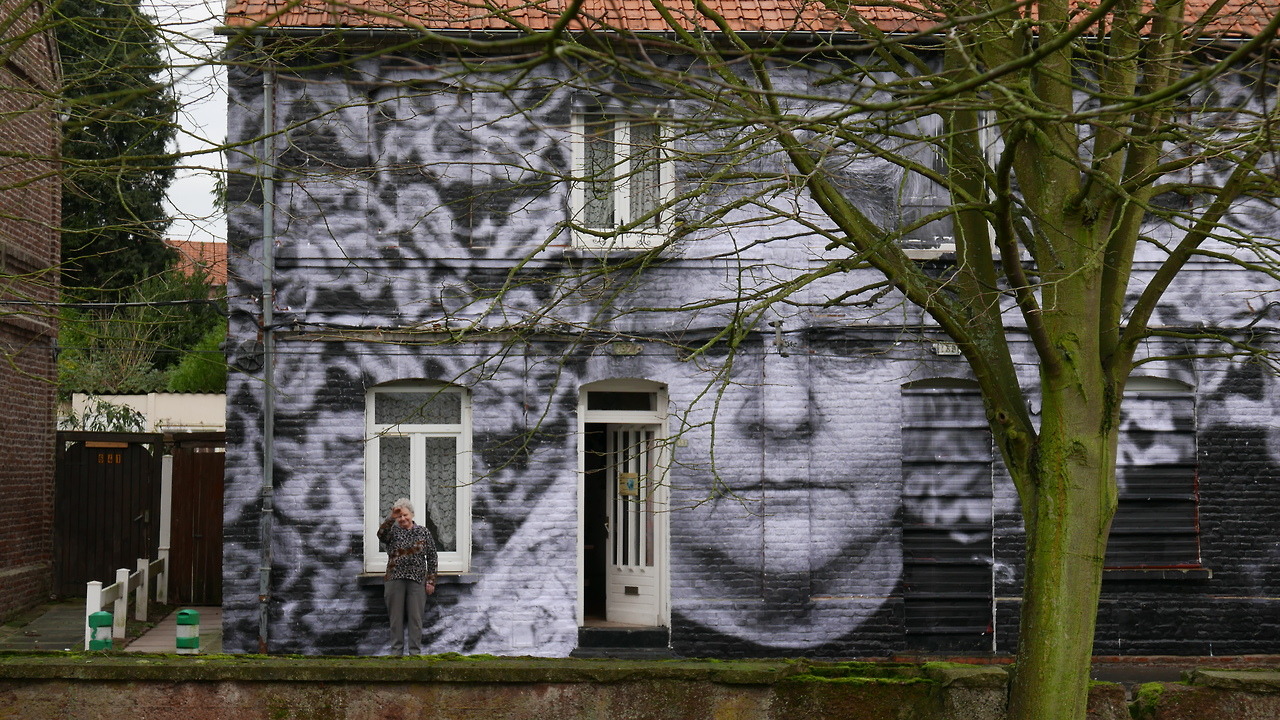This article is part of the FA special series A City of Our Own
There is much to be said about the impact had by the late Agnès Varda’s prolific cinematic canon. From her tender narrative films to her joyful documentaries, Varda’s works explore the breadth of the human experience with a curiosity of spirit that is unlikely to be replicated. Her subjects range from shopkeepers on the Rue Daguerre to revolutionary activist Huey P. Newton to an ill-fated vagabond. Yet each is framed by a gaze that asks the question, “What makes up the experience of life?”. By connecting her characters to the lived, urban spaces they inhabited – bonding external settings and inner lives – Varda spent years offering visceral answers to this question.
Known as the grandmother of the French New Wave, Varda had an unconventional start to her career. She had no formal training in cinema when she began her filmmaking – instead, she worked as a still photographer until a friend suggested she try another form of documentation. Despite initially being viewed as an outsider by the tight-knit world of mid-century French filmmakers, Varda quickly cemented her status as a giant in the genre, with her radical style informing the works of names like Jean-Luc Godard, Alain Resnais, and her eventual husband, Jacques Demy.
Varda radically played with form and a subversion of common cinematic structure in her filmmaking, but it was her emphasis on the intimate lives of women that her works quickly became known for. The gendered lens through which she explored her characters’ lives stood in contrast to the traditional patriarchal norms that even the most progressive of her contemporaries still espoused. Her first film, La Pointe Courte (1955), set the stage for how this feminist exploration would take place – within the intersection of the inner lives of her protagonists and the unique settings they inhabited.
Her works treat humans and their surroundings as characters of equal importance. And of these surroundings, there is perhaps none more textured than that of the city. In many of Varda’s films the city exists as both something observed and as a fully realized actor that pushes forward the narrative of the story. The urban environment breathes with its own anxieties and desires, offering containment in hand with commentary.
This relationship of equals between the subject and her surroundings is explored through that same gendered lens – one that reflects Varda’s own experiences while suggesting (intended or not) that feminist criticism is inherently connected with urban space. In so many works of literature and media, spatial discourse constrains the female form and experience to that of the domestic sphere – consequentially reinforcing a patriarchal societal structure that resigns women to a limited array of choices, despite attempting to subvert this very construct. In contrast, Varda’s films bring the intimate experience of womanhood to the forefront of urban life. By mapping her stories with both characters and the spaces they inhabit acting as touchstones, Varda creates a topography for women to experience urban life with full agency and, at the same time, she critiques the aforementioned limitation of choice.
The clearest example of this comes from her seminal work, Cléo de 5 à 7 (1962). In Cléo, we follow two hours in the life of a pop singer (Corinne Marchand) as she awaits the results of a concerning biopsy. Varda’s disruptive editing choices immediately bring the audience into the intimate first-person narrative of Cléo. Her anxiety, self-indulgence, and reckoning with mortality are catalogued in relentless detail, as each shot is filled with all sorts of objects of city life. A scene in a café is nearly overrun with neighboring tables, couples bickering and making up and ordering wine. The camera traces over the setting, placing our protagonist off-center – a reminder that her life is one of many in this bustling Parisian universe. Varda’s exposition in Cléo is a testament to her beginnings as a photographer: a series of snapshots layered upon one another, constructing a cinematic city of its own. This layering subverts traditional naturalistic filmmaking, where women characters are so often presented in soft, minimalistic framing, presenting ideals unattainable within the messiness of real life.
Cléo is forced to confront her surroundings in the film itself, as the use of space in each scene reminds us that despite her fame, the environment in which she lives continues to race along with no awareness of the potentially life-changing test results awaiting her. In this way, the city asserts its narrative power by decentering Cléo’s journey. It is perhaps this decentering that left some critics of Varda’s early work to decry her rejection of overtly political feminist statements. Unlike many leading feminist voices of the time, Varda avoided generalized maxims, instead choosing to focus on the uncomfortable contradictions women must reckon with while existing in a patriarchal society (her 1965 film Le Bonheur faced arguably the greatest amount of criticism for this approach, with some viewers going so far to see its satirical structure as actually anti-feminist). Varda’s work does not present characters that fit into easily definable boxes, refusing to offer the audience “one size fits all” forms by which to judge them. Instead, she creates individuals who respond to their lives in singular, unique ways – revealing the way patriarchal norms force women to choose between many, often problematic, modes of survival.
Cléo is not a feminist icon, nor is she a symbolized version of a woman. She is a flawed protagonist, whose existence can be seen both as a critique of a consumer-driven culture that presents few options by which women may successfully navigate it, and a reminder of the conflicting humanity that exists within each one of us. Varda’s artistic reaction to the didactic taste of the time presents an aesthetically rich view of the personal as political, replacing grandiose doctrine with transformative observations of characters who are deeply, deeply human.
Cléo’s less-than-ideal existence also allows her to engage with her setting with an almost surrealistic liberation. Her relationship to the capitalistic structure is revealed through copious reflective shots; shop windows, displays, and mirrors all coexist as a near-breaking of the fourth wall where the audience is offered a brief glimpse of Cléo’s awareness of the crafted form she inhabits. Varda’s choice to shoot on location adds emphasis to this choice, reminding us that the urban space we inhabit is, in and of itself, an ideal crafted to maintain particular norms. This encourages the audience to examine who these norms are intended to serve, and what interests (capitalistic, patriarchal, or otherwise) they uphold.
This concept is further interrogated in Varda’s 1984 short, Les Dites Cariatides (in English, The So-Called Caryatids). Here, buildings are literally upheld by the stone sculptures of nude women – forgotten pieces of art that, despite being integral to the bones of the city, have been deemphasized to the point of invisibility. As she narrates the film, Varda quickly engages with the fact that these sculptured women, who spend their immortal time anonymously allowing the city to maintain its status quo, were likely based on captured women, meant to be seen as a form of punishment during Roman times.
The non-consensual nature of their existence belies a common element of Western societal construction, wherein oppression is commodified, and built directly into the foundation of the urban domain. The naked form of a woman becomes both objectified and idealized (the sculptures never show strain or tension). In her narration, Varda tell the audience that the caryatid is “a concept of woman in architecture.” This serves to remind viewers that we are gazing upon a character that has been stripped of political agency, turned into an unreal conceptualization of what a woman should supposedly be.
Varda’s use of the medium of film allows – if not quite a retelling of history – a reframing of spotlight. By turning her camera on to these sculptures, Varda imbues the so-called caryatids with a graceful agency, imaging a city where the voiceless are given their due. It is a quietly revolutionary act, barely disturbing the surrounding Parisian life, but it presents a path wherein artistic contextualization can offer a critical rescripting of the lived history built into urban structures.
Varda is not alone in playing with this concept. There has been a long history of connection between filmmaking and urban space and architecture. Varda’s contemporary Jean-Luc Godard often used his portrayal of Parisian city life to emphasize the themes he wanted to highlight, and some of the most famous American horror directors made their mark by using the constraint of their macabre sets to build near-unbearable tension. Stanley Kubrick’s The Shining comes immediately to mind – it’s impossible to imagine the same slow-burning fear the film is infamous for, without the twists and turns of the imposing hotel set.
However, there is a distinct genre of filmmakers who have used the space in which their stories are set to create a deeper reflection of women’s experiences of urban space in real life. Ana Lily Amirpour’s 2015 debut A Girl Walks Home Alone at Night, set in the fictitious town of Bad City, uses its bleak, industrial setting to set the stage for a raw critique of gender norms. More recently, Lulu Wang’s award-winning The Farewell (2019) employs shots of newly constructed and in-progress cityscapes to add layers to the film’s generational family dynamics. Taken in this context, Varda’s films can be seen as foundational texts within a canon that suggests urban spaces can be used to expose, and potentially subvert traditional gender roles.
For Varda, even the absence of the city is imbued with significance. In Visages Villages (2017), Varda comments on the oppression that an urban space creates, and the nuanced freedom that arrives with its removal. Translated to English as Faces Places, it follows Varda and photographer and muralist JR as they visit small towns throughout rural France, training their respective cameras on the communities that reside in these locales.
Interestingly, by stepping outside of the urban space, Varda finds a deeper marriage between individuals and the buildings that make up their environment. JR’s photographs are blown sky-high and pasted on walls of ruins, farmhouses, and a building slated for demolition. If we take the architecture in Varda’s films to be a full actor, this film further cements her view of the personal as inherently political. When freed from the constraints created by a city structure – from consumerism to homogenous patriarchy – there is less manufactured separation of the two. Norms begin to slip away, reminding us that within the walls of urban centers lie complex, multifaceted individuals.
This is best seen in Visages Villages when Varda and JR profile a woman living in public housing who, despite immense pressure to leave, refuses to relinquish her home. By immortalizing her resilience on the very building she inhabits, Varda continues the rescripting of mythologies, allowing the image of a woman the same ever-present existence as the physical structures that make up a community.
When considered together, not only do these films reinforce the idea, touched on by Godard, that the intersection of cinema and architecture offers a fertile ground for cultural criticism insofar as it relates to the urban world, but they offer a feminist gaze with which we can further engage with the stories that exist in the structures around us.
With the joyful approach that her work is known for, Varda posits a point of dialogue on this matter. From the bustling Parisian streets in Cléo, to the labor of the caryatids, there is an innate connection between the individualized experience of a woman’s life and the space she inhabits. The political topography of Varda’s films include all elements that feed into how women move through their lived space.
By focusing on this intimate, personal view of life, Varda succeeds in disrupting the traditional form of feminist spatial discourse by suggesting a more nuanced, hopeful path. If the places we live inform our experience of life – an experience that, for women, is inherently political when existing in a patriarchal society – then these places themselves must be considered political actors. And if the urban space around us has political agency, we can interrogate its role in the upholding of norms. Varda’s films teach us that by honoring the intersection of inner lives and outer settings as she did all those years ago with La Pointe Courte. Integrating our surrounding space with a humanistic gaze, we can create new urban mythologies that reflect the full breadth of our experience as women.
